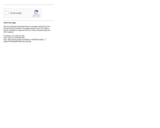
Deer Population - Life Science - Grades 6-8
- Subject:
- Biology
- Life Science
- Material Type:
- Lesson Plan
- Date Added:
- 07/18/2022

Deer Population - Life Science - Grades 6-8

Frankenfoods - Life Science - Grades 6-8

Got Tuna? - Life Science - Grades 6-8

In this activity, learners explore the "nuts and bolts" of gene chips. Learners construct a simple model of a DNA microarray (also known as gene chips) and learn how microarrays can be used to identify and treat disease--including cancer. This resource includes references and an explanation of microarrays.
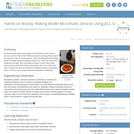
Students create large-scale models of microfluidic devices using a process similar to that of the PDMS and plasma bonding that is used in the creation of lab-on-a-chip devices. They use disposable foam plates, plastic bendable straws and gelatin dessert mix. After the molds have hardened overnight, they use plastic syringes to inject their model devices with colored fluid to test various flow rates. From what they learn, students are able to answer the challenge question presented in lesson 1 of this unit by writing individual explanation statements.

This activity is designed to help students understand the importance of observations in science. It encourages them to work on the skill of observation and communicating those observations to others in the process of scientific inquiry. Based on an original activity from Schoolyard Ecology Explorations.
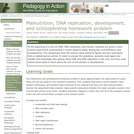
At the beginning of a DNA, DNA replication, and mitosis unit, students are given a short science news article summarizing a recent research paper. This assignment links the article to figures and key techniques from a related journal article, requiring students to apply and transfer the knowledge they gained in the unit.
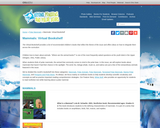
This article features children's literature about mammals and the mammals that live in the polar regions.
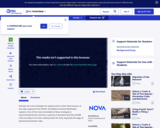
This video segment from NOVA: "The Mystery of Animal Pathfinders" explores how the migratory patterns of shorebirds have evolved to coincide with the spawning of horseshoe crabs.

This activity is a series of game-like lessons that assist the student in developing the logic skills needed to read mass spectrometer output and formulate the identity of an unknown molecule. As students endeavor to identify the unknown they must apply fundamental chemistry knowledge including formula mass, isotopes, periodic table, relative abundance, interpreting graphs, organic chemistry, ionization, bonding rules, and structural formulas. Based on an activity presented by Olaf Runquist, Professor, Hamline University.
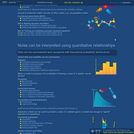
In the first part of this video, we derive the law of mass action from one example of a picture of molecular collisions. For this course, we use the "law of mass action" to refer to an idea that chemical reaction kinetic rates can be expressed using products of the abundances of reactants raised to exponents. Studying cooperativity and Hill functions in the second part of the video allows us to investigate a simple example of bistability in the third video segment.
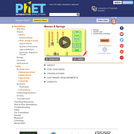
A realistic mass and spring laboratory. Hang masses from springs and adjust the spring stiffness and damping. You can even slow time. Transport the lab to different planets. A chart shows the kinetic, potential, and thermal energy for each spring.
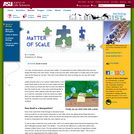
You may not think about it, but size does matter. It is especially true when talking about the very tiny things that exist in the nano world.

In this activity, students use datasets from both the Northern and Southern hemispheres to observe seasonal and hemispheric differences in changes to atmospheric C02 release and uptake over time.

After conducting the associated activity, students are introduced to the material behavior of elastic solids. Engineering stress and strain are defined and their importance in designing devices and systems is explained. How engineers measure, calculate and interpret properties of elastic materials is addressed. Students calculate stress, strain and modulus of elasticity, and learn about the typical engineering stress-strain diagram (graph) of an elastic material.
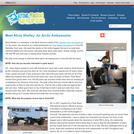
In an interview, a zookeeper at the Columbus, Ohio, polar bear exhibit describes time she spent at Churchill, Manitoba, educating tourists about polar bears and what can be done to help populations in the wild. This interview appeared in the free, online magazine Beyond Penguins and Polar Bears.
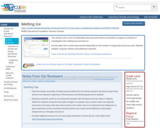
This activity uses a mix of multimedia resources and hands-on activities to support a storyline of investigation into melting sea and land ice.
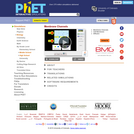
Insert channels in a membrane and see what happens. See how different types of channels allow particles to move through the membrane.
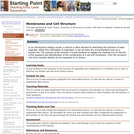
A one page assignment that uses online tutorials to give students a first exposure to the components of a cell and membrane.
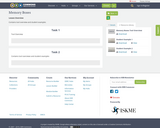
Contains tool overview and student examples